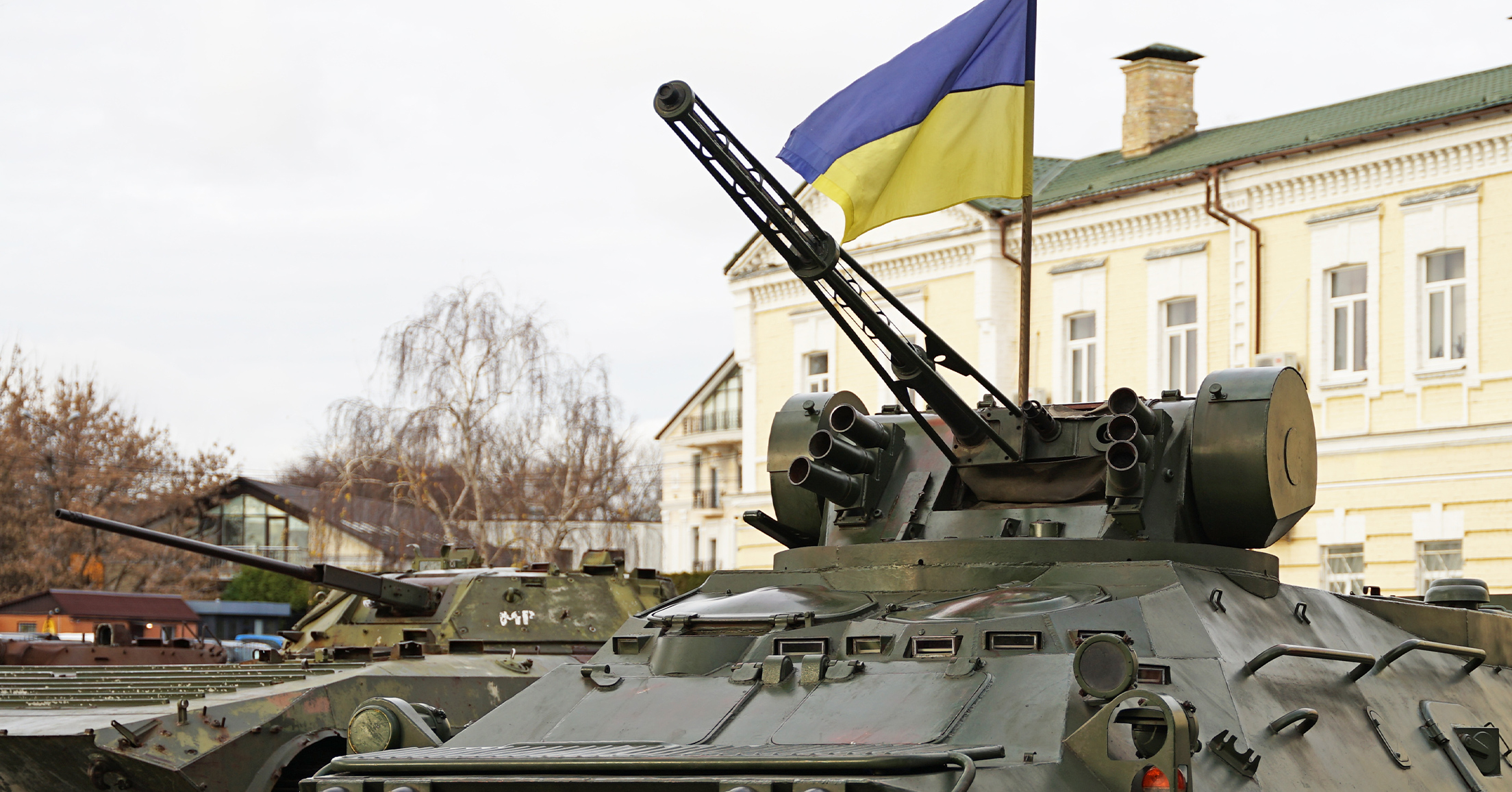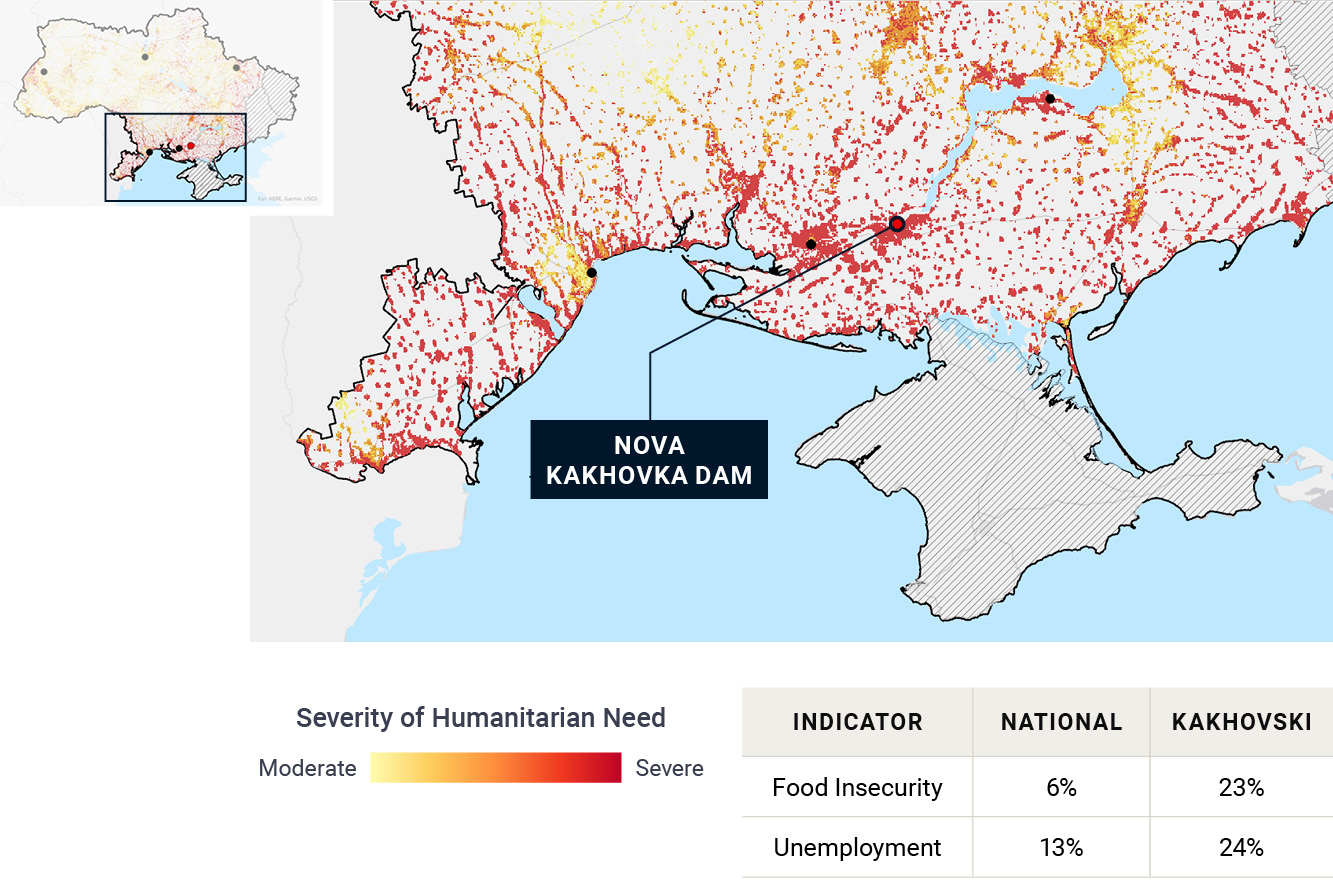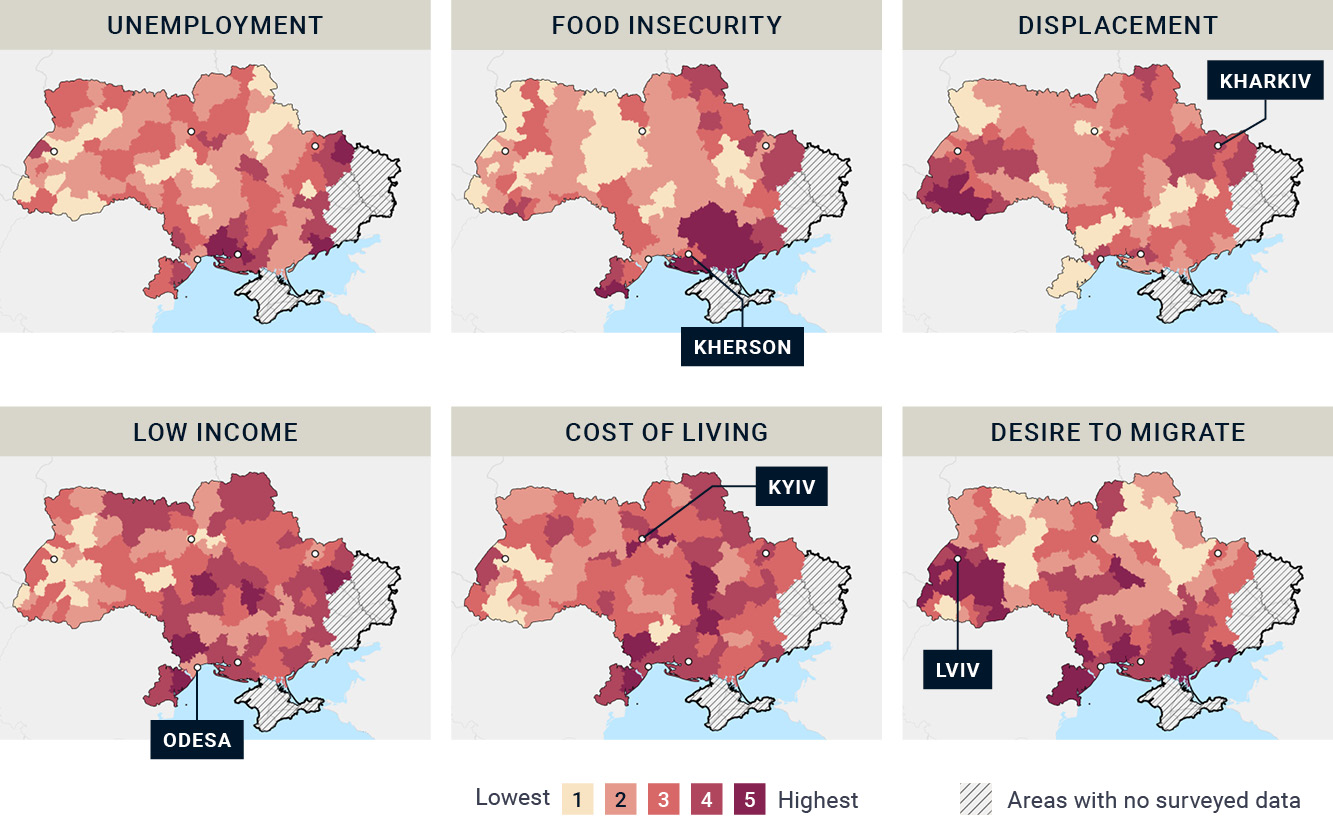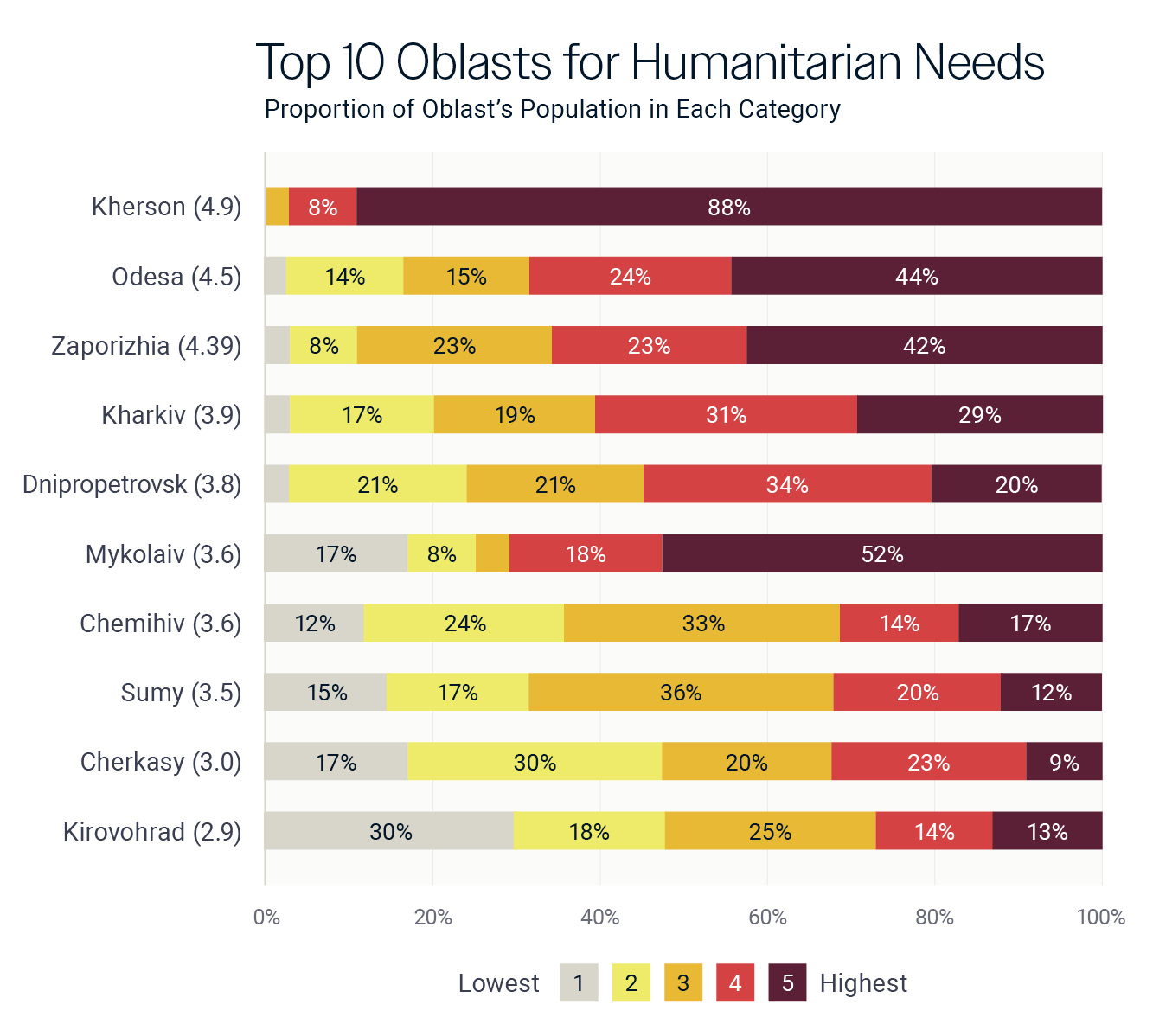Map Local Trends in Food Insecurity


Introduction
Russia’s military invasion of Ukraine triggered Europe’s largest humanitarian crisis since WWII. To date, approximately one-third of Ukraine’s pre-war population has been displaced, totaling an estimated 13 million people. Fraym data further reveals that 42% of the remaining population would emigrate if resources allowed.
Fraym’s localized population data enables organizations responding to the crisis to understand the communities most in need of humanitarian and development assistance as Ukranians fight to resist Russian aggression and strengthen their democracy.
Access to Fraym data means our partners can:
Below, we utilize Fraym’s granular attitudinal data to understand and map the extent of Ukraine’s humanitarian crisis.
Humanitarian Needs Index
Russia’s war has ground Ukraine into a deep humanitarian crisis. More than 7,000 civilians have died, one in three Ukrainians are unemployed, and one million need food assistance. Our Humanitarian Needs Index combines these data and others to help crisis responders target limited resources.
Our index is based on six population variables produced by our novel data and machine learning technology. Indicators are scaled from 1 to 5 and averaged. UN data on humanitarian access, conflict severity, and other factors have also been incorporated.

Many oblasts score high on the humanitarian needs index. However, to further illustrate the magnitude of humanitarian need, Fraym weighted each index score by population, to explore the proportion of individuals in each category.

Fraym’s Humanitarian Needs Index shows that populations in the Oblasts of Kherson, Odesa, and Zaporizhzhia have the most severe needs. Ranking the highest on the need index, Kherson has 88% of individuals in the “high need” category (index score 5). More than 50% of the population of Mykolaiv was also categorized as “high need.”

The explosion of Nova Kakhovka Dam, a major hydroelectric power station, as well as intensified fighting amidst Ukraine’s counter-offensive is exacerbating a dire humanitarian situation in the southeast. Fraym data can allow crisis responders to address the top needs of communities in the region at a hyperlocal scale.

Conclusion
Understanding the localized humanitarian picture is critical for planning, implementing, and adapting responses to humanitarian crises. With Fraym’s community-level data, you can more effectively target responses to the most vulnerable communities and prioritize resources to address both acute needs and longer development goals for strengthening resilience in Ukraine.